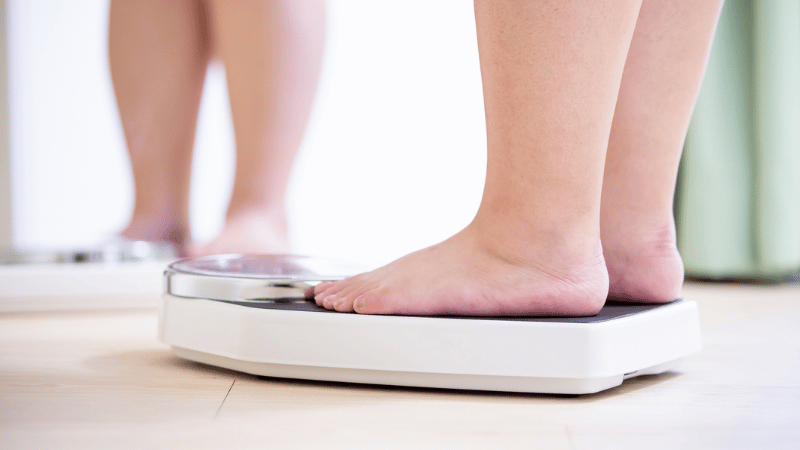Did you know overweight individuals are at high risk of developing peripheral artery disease? That’s because extra body weight can increase inflammation throughout the body, contributing to plaque buildup in the arteries.
Studies suggest that obesity causes high triglyceride and LDL cholesterol levels. High cholesterol can lead to an unwanted build-up of plaque in the arteries, narrowing them and preventing oxygenated blood from moving through the body.
If you’re overweight and experience leg weakness or discomfort, consider scheduling a consultation with a vascular doctor for a PAD diagnosis. Some of the first warning signs of peripheral artery disease in overweight individuals are leg pain and difficulty walking or climbing stairs.
In this article, we’ll discuss the link between weight and PAD and explore how obesity contributes to PAD progression.
Understanding Peripheral Artery Disease (PAD)
PAD is caused by the narrowing of the arteries. Plaque build-up prevents blood, oxygen, and nutrients from reaching the lower extremities, affecting the legs, feet, and ankles. Individuals with PAD may experience leg pain, cramps, or weakness when walking or participating in low-impact activities. Individuals who are overweight or struggling to maintain a healthy weight are most susceptible to the PAD risk factors.
It is expected that over 12 million individuals in the United States have peripheral artery disease.¹ While many people with PAD experience leg pain, many don’t experience any symptoms at all.
It’s important to note that PAD is also not reversible. To protect yourself, you’ll want to know the PAD risk factors and schedule a consultation with your doctor to discuss treatment plans available for your condition.
Exploring the Impact of Obesity on Vascular Health
In the United States, obesity is measured by an individual’s body mass index (BMI). A BMI of 30 or higher is considered obese.² It is expected that one in three adults in the United States are overweight, and two in five are obese.4 Obesity can lead to many different health conditions, including high blood pressure and diabetes.
Without regular exercise and a well-rounded diet, obesity can cause serious vascular conditions like PAD. PAD is a chronic condition. While there is no cure, effective treatment plans can help you manage your symptoms and improve your quality of life.
Unraveling the Mechanisms: How Obesity Increases PAD Risk
So, how exactly are body weight and artery health related? Excess weight increases the amount of fatty material in your arteries. This fatty material can cause chronic inflammation and arterial damage. This is called atherosclerosis. Atherosclerosis is the leading cause of PAD. It’s caused by excess fat and high cholesterol in the arteries. When left untreated, it can lead to dangerous health conditions like blood clots, strokes, and heart attacks. Many individuals with obesity are also at higher risk of developing atherosclerosis.
Another problem is that many of the day-to-day symptoms associated with obesity also overlap with PAD. This can make it more challenging to diagnose PAD or to know when it’s time to see a vascular specialist. Symptoms associated with obesity include shortness of breath, increased sweating, fatigue, and joint and back pain. Obesity can also limit your physical capabilities and cause reduced mobility.
If you’re overweight or obese and you’re experiencing leg pain, consider scheduling a consultation with your medical provider to confirm the cause of the symptoms. Leg pain is a common symptom of PAD. If left untreated or undiagnosed, leg pain can lead to critical limb ischemia.
SCHEDULE A CONSULTATION ONLINE
Identifying Risk Factors Associated with Obesity and PAD
Obese individuals with or without PAD are at a higher risk of developing metabolic disorders. A few of the most common disorders include:
- Diabetes
- High blood pressure
- High cholesterol
To limit obesity and peripheral artery disease risk factors, you’ll want to make sure you are:
- Maintaining a healthy BMI
- Getting enough daily exercise
- Walking daily
- Avoiding smoking
- Prioritizing a well-rounded, healthy diet
If you’re struggling to maintain a healthy weight, speak to your medical provider. They’ll help you build a personalized health plan to help you get back on track.
How can People With PAD Reduce Their Risk of Complications?
If you’re worried about weight and PAD, the best thing you can do for your health is to schedule a consultation with a vascular specialist. A doctor will perform a physical exam and test for PAD using ankle-brachial index (ABI), and medical imaging such as ultrasound. If they suspect you have PAD, they will recommend one of three different non-surgical procedures based on your condition.
- Angioplasty: During an angioplasty, an IV is inserted in the vein to help open the blocked artery and compress excess plaque against the artery walls.
- Stent Placement: If necessary, a vascular specialist may recommend an angioplasty with a stent placement. During this procedure, a stent is guided into the artery.
- Atherectomy: A thin catheter tube is inserted into the artery during an atherectomy. The catheter uses a blade or a tiny laser to remove the excess plaque from the artery.
Take Control of Your Weight and PAD with USA Vascular Centers
Dealing with obesity and peripheral artery disease can be challenging. You can regain control of your health with meaningful lifestyle changes, medications, and treatment.
We’re here to help diagnose and provide a safe and secure treatment plan for PAD. Schedule a consultation online or call us at 888.773.2193 today to get started.
Sources
- Epidemiology of peripheral artery disease | circulation research. (n.d.).
- Obesity definition. Obesity Prevention Source. (2016, April 14).
- U.S. Department of Health and Human Services. (n.d.). Overweight & Obesity Statistics – Niddk. National Institute of Diabetes and Digestive and Kidney Diseases.


